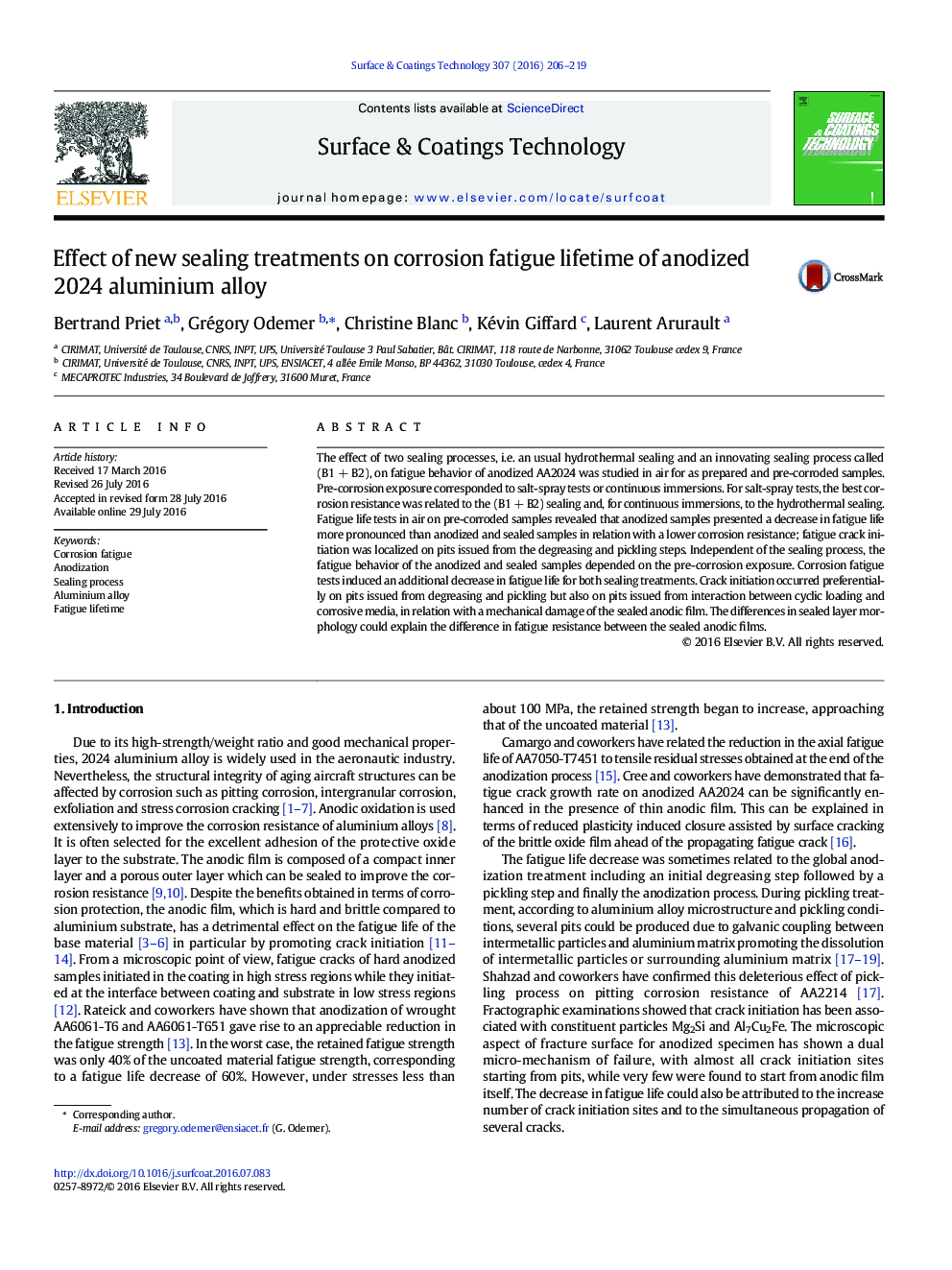| Article ID | Journal | Published Year | Pages | File Type |
|---|---|---|---|---|
| 1656200 | Surface and Coatings Technology | 2016 | 14 Pages |
Abstract
The effect of two sealing processes, i.e. an usual hydrothermal sealing and an innovating sealing process called (B1Â +Â B2), on fatigue behavior of anodized AA2024 was studied in air for as prepared and pre-corroded samples. Pre-corrosion exposure corresponded to salt-spray tests or continuous immersions. For salt-spray tests, the best corrosion resistance was related to the (B1Â +Â B2) sealing and, for continuous immersions, to the hydrothermal sealing. Fatigue life tests in air on pre-corroded samples revealed that anodized samples presented a decrease in fatigue life more pronounced than anodized and sealed samples in relation with a lower corrosion resistance; fatigue crack initiation was localized on pits issued from the degreasing and pickling steps. Independent of the sealing process, the fatigue behavior of the anodized and sealed samples depended on the pre-corrosion exposure. Corrosion fatigue tests induced an additional decrease in fatigue life for both sealing treatments. Crack initiation occurred preferentially on pits issued from degreasing and pickling but also on pits issued from interaction between cyclic loading and corrosive media, in relation with a mechanical damage of the sealed anodic film. The differences in sealed layer morphology could explain the difference in fatigue resistance between the sealed anodic films.
Related Topics
Physical Sciences and Engineering
Materials Science
Nanotechnology
Authors
Bertrand Priet, Grégory Odemer, Christine Blanc, Kévin Giffard, Laurent Arurault,
